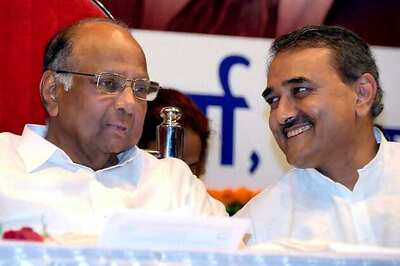
views
India’s Amrit Kaal corresponds with its ‘population dividend’ phase, or maybe that is what will manifest the former. With 60 per cent of the population between the ages of 18 and 64, India has a formidable talent pool. In the next few decades, we have an opportunity to transform the economic demography of our nation at an unprecedented rate. Policy support, an abundance of capital, a skilled talent pool, and technology diffusion are key cornerstones to exploiting this once-in-a-lifetime opportunity.
As we know it, the Industrial Revolution helped several economies achieve their developed status. India must leverage the ‘Digital Revolution’ while pursuing non-linearity of the human capital. We must reject all existing productivity baselines and reimagine how the bar can be raised to create the multiplier effect. Technology penetration in all core sectors – agriculture, manufacturing and services, has created the perfect setting for blending innovation, technology-enabled high productivity, and skill development.
Last year, during the Budget presentation session, Finance Minister Nirmala Sitharaman stated that India would create six million jobs in five years. It does not appear to be simple in reality, and it will not be sufficient. To increase the number of jobs, India continues to be business-friendly by attracting investments, enabling capital investments, growing the startup ecosystem, and placing emphasis on partnership routes to drive self-reliance. But, to accelerate the job market, thrust is required in three areas — improving the gross enrolment ratio (GER) for higher education, ensuring the employability of the graduates coming out of the university gates, and providing incentives for businesses to invest in the continuous development of core & technology skills.
The current GER for higher education is around 27 per cent. With only 1.3 crore students enrolling in higher education each year, we have a lot of room for improvement. Without an immediate and urgent intervention to improve enrollment, we will end up with a void that will be impossible to fix. As of 2021, 25 per cent of our population was estimated to be under 14. As they approach the threshold of higher education, we must ensure the conditions are right for them to continue learning. Gender parity, economic support, and access to higher education need to be addressed. Digital platforms are a great way to reduce the gap, optimise the cost of higher education, and make high-quality education available on demand to students in the remotest areas.
The job-readiness quotient of our graduates continues to be a challenge for businesses. They need to invest anywhere from 4 to 24 weeks to ensure basic productivity. Innovative solutions like “Degree Apprenticeship” are the panacea for improving the employability of graduates. Creating programmes that enable ‘learning by doing’ and incorporate ‘on-the-job learning’ during the undergrad term will provide the much-needed experience. For businesses, it is a way to create sustainable talent supply chains for the future.
Every rupee spent on skill development generates 12-17 times more value over its lifetime, resulting in a positive spiral for our GDP growth. While businesses do their bit, the workforce engaged in information technology, services, and new economy jobs has to invest in re-skilling and acquire new ones to stay relevant. Skill development expenses by businesses must be treated on par with capital investments and R&D. Individuals’ expenses for higher education and skill acquisition should be tax deductible.
Global headwinds may hamper the speed of growth, but the overall economy is quite strong and is expected to grow. Lay-offs in certain pockets may be expected as businesses adjust the capital-talent equation. India continues to benefit from the “China plus one” strategy in the manufacturing and hi-tech segments. The technology and services sector typically accelerates after a brief drop in demand from international clients.
In summary, the budget must provide opportunities to plough back retained earnings to drive growth, offer policy support for innovation in improving GER, and provide incentives for capital deployed towards workforce skill development.
(The author is the head of employability business and chief operating officer of TeamLease Edtech)
Read all the Latest Business News here



















Comments
0 comment